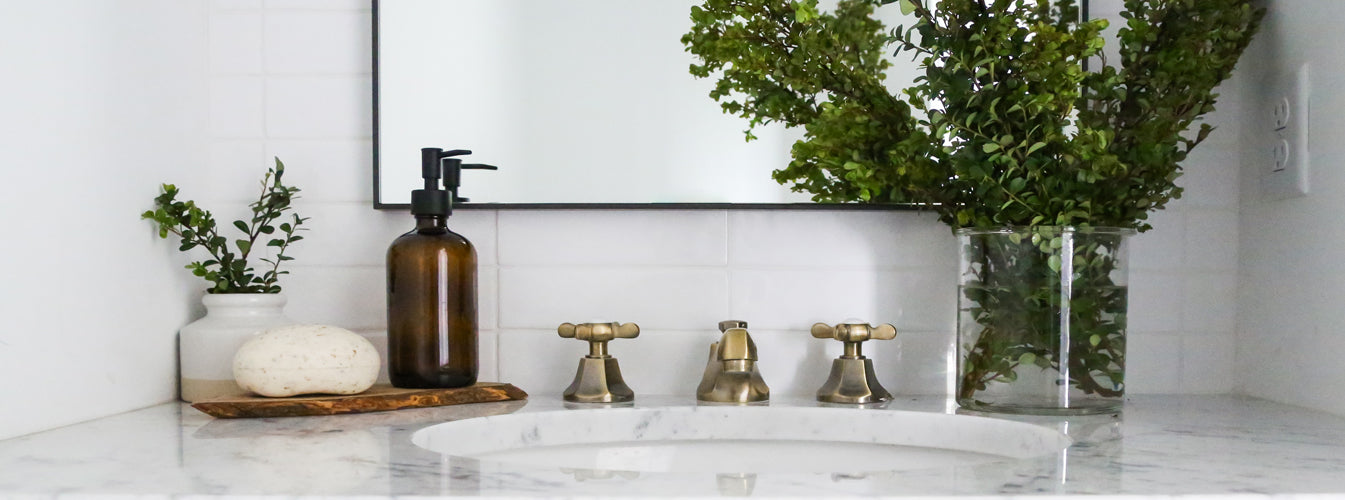Get [PRO] Pricing
Get [PRO] Pricing

Even the most durable bathroom faucets eventually develop minor issues after years of reliable service. However, there's no need to panic and call a plumber just yet. With some simple do-it-yourself tips from Kingston Brass, you can tackle common bathroom faucet problems and get your faucet working like new again. Two of the most common issues are leaks, drips, and low water flow.

Let's start by understanding the difference between leaks and drips. Dripping occurs when you close the faucet valve, but water continues to flow out of the spout in a rhythmic, annoying drip every few seconds. In some cases, the dripping may stop after a minute or two. On the other hand, leaks happen when water leaks out of a joint or any part of the faucet's waterway.

Let's tackle drips first. If you close one or both hot and cold valves and notice water dripping for a short period, it's likely due to a dirty aerator. This is a common issue that's easy to fix. Water sits inside the aerator, accumulating debris. When you close the valves, the trapped water starts slowly dripping. Fortunately, aerators are easy to remove and clean. In some cases, you may need to soak the aerator in a 50/50 solution of water and vinegar to remove stubborn debris. These simple steps can get your faucet back to normal in no time.

If you have a constant drip, the problem is most likely with the cartridge. If your faucet is equipped with a ceramic cartridge, replacing it is a simple matter of removing the old one and inserting a new one. However, suppose your faucet has a washerless cartridge. In that case, it's recommended that the springs and washers be replaced along with the cartridge. The springs are designed to apply pressure to the washer and press it on the bottom plate of the cartridge, creating a tight seal that blocks the flow of water. Water seeps through and drips from the spout when the spring loses tension.

While a drip can be annoying and may slightly increase your water bill, it won't cause any property damage. However, leaks can have expensive repercussions, potentially leading to severe flooding and damage to flooring and drywall. Visual-tactile inspection is the best approach to identifying the source of a leak. Once you have isolated the general location, physically check for moisture by feeling with your hand. You might come across a puddle of water under the sink, but that doesn't necessarily mean the leak originated there. To visually identify the source of the leak, perform a simple test. Shut off both the hot and cold supply valves on the wall, dry any remaining water that leaked on the faucet, wrap the area with toilet paper, and turn the shut-off valves back on. This test will help you pinpoint the actual location of the leak. Once you identify the source, you can address the issue, whether it's a worn-out "O" ring, washer, or simply a hole in the waterway.

 Another common issue is low water flow. It can be incredibly frustrating to experience a reduced volume of water coming out of the spout. This may indicate a clogged aerator or obstructions in the waterways or cartridge. Start by removing the aerator and opening both valves. This will help determine if the aerator is clogged with sediment. If the aerator is the culprit, clean it with an old toothbrush and rinse it thoroughly. In case of calcium or lime accumulation, soak the aerator in a 50/50 solution of water and vinegar overnight, then rinse and replace it.
Another common issue is low water flow. It can be incredibly frustrating to experience a reduced volume of water coming out of the spout. This may indicate a clogged aerator or obstructions in the waterways or cartridge. Start by removing the aerator and opening both valves. This will help determine if the aerator is clogged with sediment. If the aerator is the culprit, clean it with an old toothbrush and rinse it thoroughly. In case of calcium or lime accumulation, soak the aerator in a 50/50 solution of water and vinegar overnight, then rinse and replace it.If the water flow is still low even without the aerator installed, close both hot and cold shut-off valves, remove the supply hoses at either end and check the flow. If the water flow is satisfactory, the blockage is most likely within the faucet cartridge. Refer to the manufacturer's information to identify the appropriate cartridge and follow the instructions for replacement.

In some cases, the faucet may have deteriorated to the point where replacing it is the best option. If that's the case, feel free to visit the Kingston Brass website. They offer an extensive selection of kitchen and bathroom faucets, ensuring you'll find the perfect replacement for your needs.
By following these DIY tips and considering replacement when necessary, you can keep your bathroom faucet functioning optimally, save money on unnecessary plumber calls, and maintain a beautiful and functional bathroom space.